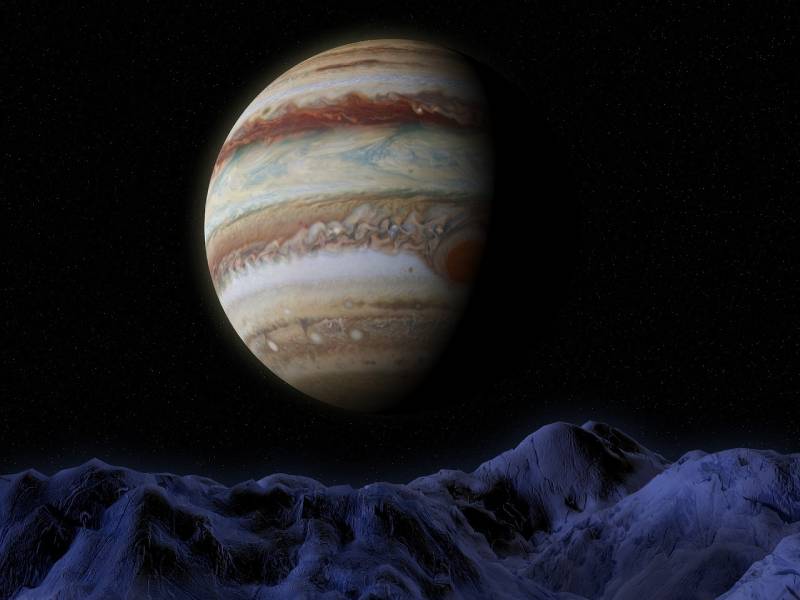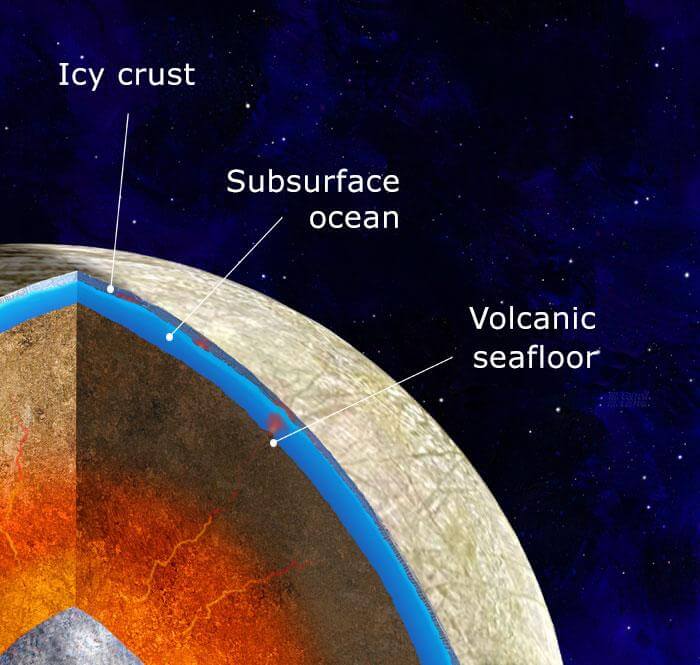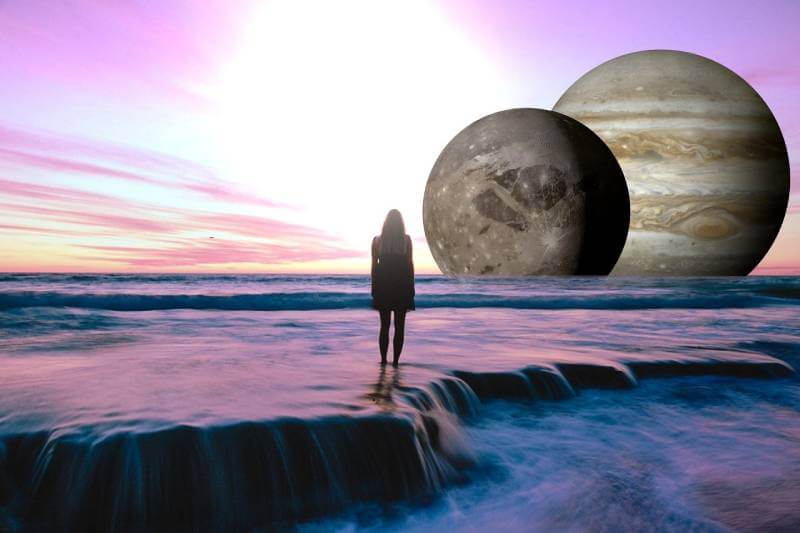Of Jupiter’s 90+ moons, Europa is one of the leaders in the pack. It is the sixth closest moon to Jupiter. Europa, with the other largest moons – Lo, Ganymede, and Callisto – were the first moons to be discovered outside of the Earth’s moon. They were discovered by Galileo Galilei in 1610. Europa can easily see Jupiter from its surface.
Scientists believe that if you were standing on Europa that you would be able to see the entire planet crystal clear. It would appear like one giant bright disk in the sky.
What Would Jupiter Look Like From Europa?
If you were standing on the surface of Europa and looking at Jupiter, it would be absolutely amazing.
Here is what Jupiter would look like from Europa:
- Size: Jupiter would look much larger in the night sky compared to the moon’s size from Earth. Since Jupiter is the largest planet and is 11 times larger than Earth, then Jupiter would be incredibly larger than that of our moon.
- Brightness: Jupiter is extremely bright due to its reflective cloud cover. So you would be able to see an extremely bright planet that lights up the sky.
- Colors: The famous Red Spot would be visible from Europa. You would be able to see it without the use of telescopes or other scientific equipment.
- Moons: Depending on the orientation of Jupiter and its other moons, you might be able to see other moons from Europa, such as Lo, Ganymede, and Callisto. They would likely look like wandering stars – much like how we view planets from Earth.
- Rapid Motion: Jupiter spins rather quickly while Europa’s orbital period is much slower than Jupiter’s. This means that if you were observing Jupiter for an extended period, you would likely be able to notice the motion.

Jupiter would look incredible! Imagine having our moon being 5285.2 times bigger. But what is important to remember is that our moon is much closer to the Earth than Europa is to Jupiter, so it is hard to visualize the comparison.
The Earth is 238,900 miles away from our moon. While Europa is 390.4 million miles away from Jupiter. If Europa was closer to Jupiter then Jupiter would likely consume the entire sky of the Europa.
Living on Europa
It would not be possible to live on Europa. When you land on Europa you will be landing on a thick layer of ice that covers the entire moon. Scientists do believe that underneath the icy surface resides large oceans.

If there is water on the moon then it could be speculated that there is marine life. But no plant life would be able to survive based on the information we have right now about the moon.
Even if something were to miraculously start to grow on the surface then it would just be blasted with the radiation from Jupiter – it couldn’t survive.
Not only that, but there is a very unique atmosphere on Europa. It is composed of oxygen and small amounts of water vapor, but the atmosphere is so tenuous that its surface pressure is barely one hundred billionth that of the Earth. That just isn’t conducive to sustaining life.
Conclusion
We don’t exactly know what life on Europa would entail. We have never been there. We do have some scientific information that helps us speculate about life on Europa, but we don’t know for sure. In the future, scientists plan on trying to have Europa landings where we collect samples to help us better understand the chemical makeup of the moon.
It would also be extremely interesting to see pictures of Jupiter from the surface of Europa. Would our predictions be correct? Would Jupiter be as brilliant as we imagine?
Scientists would love to investigate more about Jupiter and its moons. We will continue to learn more as the years go on, and hopefully, we get some of our most pressing questions answered.

